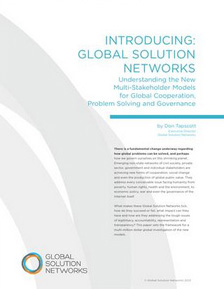 To be competitive in this new environment, organizations need to analyze complex business environments in enough time to respond effectively— and that requires a better approach to the explosion of data and information.
To be competitive in this new environment, organizations need to analyze complex business environments in enough time to respond effectively— and that requires a better approach to the explosion of data and information.
The amount of data pouring into the social web is staggering. Every minute of every day, 48 hours of content is uploaded to YouTube, 47,000 apps are downloaded from Apple, 684,478 items are shared on Facebook, 100,000 new posts appear on Twitter and 2 million search queries are sent to Google. Combining this with company data, whether it is structured (customer relationship management, supply chain, point-of-sale) or unstructured (social media, blogs, call centre recordings) and organizing it in a user-friendly way is a huge challenge.
In the past, analytics focused on internal information that supported tactical decisions aimed at cost avoidance. It informed a few select executives whose scope of analysis remained inside firm boundaries. Interfaces were complex and access was limited to sophisticated IT experts. The systems themselves were static, producing a series of standardized reports. Finally, they supported sporadic strategy planning processes that were subject to rigid rules.
A new approach extends analytics to a broader range of employees, as well as external stake- holders. It enables and supports collaboration within and outside the enterprise. An articulated transparency strategy defines who receives what information, under what conditions, with what frequency and in what formats. Integrating internal and external information enables competitive advantage. Cost reduction is no longer the only focus: managers use data about customer behavior, supply chain performance and the market to drive revenue growth. Tools are visual and interactive, enabling non-specialized users to identify and act on opportunities and challenges. Information delivers predictive insights in addition to historic analysis, enabling a continuously evolving strategy plan guided by corporate performance management criteria.
As corporations grapple with ever increasing volumes of data, they need to deliver it to the decision-making individuals in the front lines. Younger workers are comfortable with interactive tools and expect access to the information they need to perform effectively. By engaging and collaborating throughout the firm and with its entire b-web, a firm drives decisions to the points of highest impact.
Don shares the result of a recent research project called Rethinking analytics for the Social Business, discussing topics like:
- how social changes analytics
- the new role of analytics in marketing, supply chain, manufacturing, R@D and business strategy
- how to leverage structured and unstructured data for competitive advantage
- lighthouse case study examples of how companies are getting it right
- how to monetize “information exhaust”
- what organizational changes (in structure and philosophy) are required.
Image courtesy of Open City @ CKX (Photo by Dave Chidley)





